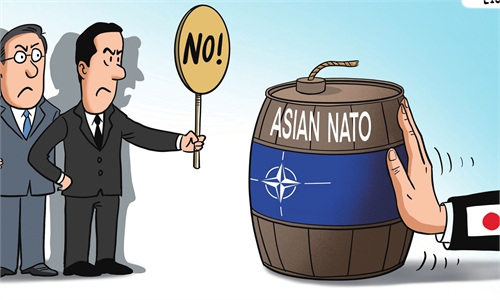 Regional togetherness: Asean’s first summits were irregular and distantly spaced. Now two summits are held regularly every year. — Bernama
Regional togetherness: Asean’s first summits were irregular and distantly spaced. Now two summits are held regularly every year. — Bernama
Asean is a realities-grounded institution with certain strengths, which are hidden only to those who fail to appreciate them.
AS regional summits go, Asean’s has been growing by leaps and bounds. Not that this positive attribute is universally acknowledged, as is typical with Asean attributes.
Asean’s first summits were irregular and distantly spaced, and at one point even 12 years apart. Now two summits are held regularly every year, either together or spaced apart by months, with related Asean-led meetings in series.
Between summits, several hundred meetings of Asean officials are held each year to implement, oversee, and calibrate policies. The numerous meetings have prompted a misperception that Asean is merely a talkshop.
Asean’s irregular summits proved that Asean leaders meet only when needed, as circumstances require, and not for the sake of meeting. Asean has never prioritised form over function, or ceremony over substance.
Asean is popular and successful for the common familiarity and shared comfort level leaders feel when they meet. These come only with frequent meetings forming a seamless web of mutual and reciprocal goodwill.
Critics cite the failure of the 2012 Asean Foreign Ministers’ meeting in Cambodia to issue a joint communiqué at its conclusion as a sign of weakness and inefficacy. But it takes decisiveness to opt not to issue a statement rather than produce a bland and meaningless one just for the sake of doing so.
Formal meetings are judged by how or whether they serve their purpose while in session, not by the feel good diplomatic summaries issued afterwards. As a process, Asean proceedings have seldom if ever been “full glasses”, but the uninitiated would see the “glasses” only as half-empty.
Asean’s core purpose has always been the quality of membership relations. How others see it is up to them, but this is no more than a concern for Asean’s public relations department if there is one.
Laos’ Asean chairmanship this year and its hosting of the 44th and 45th Summit over the week have predictably been scrutinised critically. A typical complaint is the seeming absence of any definitive resolution on the Myanmar impasse or the South China Sea disputes.
No annual summit is like a task force producing fail-safe solutions for outstanding issues. A small and underdeveloped Laos is already doing its best tackling the mammoth logistical and financial demands of hosting a series of international conferences at the highest official levels.
Any other country chairing Asean this year would face the same challenges. Asean makes no judgment about the economic status of members while helping less endowed members fulfil their financial obligations.
Asean is better at avoiding upheavals like Myanmar’s or war-torn Cambodia’s before its 1999 membership, than in conclusively resolving conflict that has occurred. It’s still not perfect, of course.
Asean’s record still compares favourably with the European Union’s, which failed to prevent the Kosovo and Ukraine wars. Nato (the North Atlantic Treaty Organisation) as a military alliance may mitigate these conflicts but has instead instigated and amplified the Ukraine war.
The EU and Asean were once described as the world’s most successful regional organisations, in that order, but that was before Brexit, when Britain exited the EU in 2020. No Asean country has sought to leave despite some challenges, while several countries not eligible to join have nonetheless tried.
The next and final member of Asean is Timor-Leste, the former Portuguese territory and Indo-nesian province of East Timor. It is the only sovereign nation in South-East Asia still to join Asean.
Others, from Sri Lanka and Papua New Guinea to Mongolia and Turkey, have reportedly sought Asean membership, but were never seriously considered. Timor-Leste is different not least because it is in South-East Asia, although its Asean journey has been long and challenging.
In 2006 Timor-Leste submitted a “soft application” to join, and the following year Asean signalled a “willingness in principle” to consider it. Most Asean member states endorsed its application, but not all.
Meanwhile Dili worked hard to fulfil membership requirements by acceding to Asean norms and conventions, including the Treaty of Amity and Cooperation in South-East Asia. It even introduced Asean Studies in schools, unlike most Asean countries.
Dili formally applied to join Asean in 2011, and Asean responded in 2022 with an “agreement in principle” to admit it. Membership remains a work in progress, with the Laos Summit during the week a part of that journey.
The state of the South China Sea’s multiple disputes has also been taken as a measure of Asean’s competence. Any catastrophe resulting from the disputes would be of concern to Asean as it would be to anyone else.
However, the disputes are between individual sovereign nations as neighbours and involves less than half the Asean membership. Asean is quietly confident that they can be resolved or are resolvable with time, provided there is no ulterior motive or foreign agenda at play.
Asean understands that the region has managed challenges before and wants that to continue. Anything less will not be Asean, nor will the region be sovereign.
Bunn Nagara is director and senior fellow at the BRI Caucus for Asia-Pacific, and an honorary fellow at the Perak Academy. The views expressed here are solely his own.
Related posts:
Connected by mountains and waters
China Daily: Asean should beware US hijacking its agenda
Malaysia poised to lead Asean in 2025, driving regional ...
We hope that this year's leaders' meetings on East Asia cooperation serve as a reminder to all external countries: the region welcomes partners in peaceful development, but not those that create trouble and conflict.
Japan's push for an “Asian NATO” threatens to disrupt decades of prosperity and stability in the Asia-Pacific region.



No comments:
Post a Comment